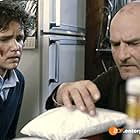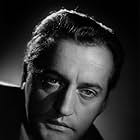Sfoglia gli episodi
Foto
Trama
Recensione in evidenza
I'm so glad that we have a tool like the IMDb to locate long lost treasures. This docudrama miniseries is one of the best films produced by German television ZDF. It tells the story of the Russian revolution from february 1917 until 1921. With a lot of love to almost every detail, I believe the ZDF film team was even allowed to take shots in 1966 Leningrad (now StPetersburg). Something almost unheard off in the cold war. Because I was only 12 years old, when this miniseries was aired from 1967-1968, I can only give a vague review. Impressive how the Duma was reenacted, with actors like Wolfgang Kieling, Klaus Loewitsch, Peter Weck and almost every famous German drama TV-star participating in smaller or larger roles. At times hundreds if not up to 2000 extras must have been used. Large street demonstrations, street-fighting, and other types of using large crowds. It did not look cheap. I remember the old motor vehicles of that period, some build into armored cars. Old buses, some beautiful horse drawn carriages and a variety of steam locomotives being used. Very interesting was the recreation of the costumes and uniforms. The interior of shops and restaurants, just like we see now in mega-million dollar productions.The weapons, from the very famous 1906 maxim machine gun, to the cavalry sabers of the cossacks. All looked very authentic for a 12 year old history fan like me. The chaos and the anarchy of the Russian civil war was very mind boggling and suspense fully reenacted. I still remember the nail biting story of the Czech-legion: Captured Czech Soldiers from the early years of WW1, where asked by the white army to fight against the Bolsheviks in ex chance for freedom. A large number volunteered in eastern Siberia. They where equipped and led by the whites. Witnessing white atrocities along the trans-Siberian railroad, they kicked the white officer out. All they cared for now, was to get home. When they clashed with the red-army, they asked for "free passage". The reds denied them free passage, so they literally had to fight their way back. When they reached the Slovakian border, they left 6000 km. in 2 years behind them, with half of their ranks killed in action. Also the sad end of Admiral Koltchak. A white military leader who was pushing back the red army for more than 4000 km from Wladiwostok to Ekaterinenburg, where his army was stopped and he was captured and executed. Those two battles above where not the only ones to be featured, there was General Petljura's uprising, Wrangels push from the Crimean and Nestor Machnows anarchist movement portrait in rich details. I still remember the assassination attempt on Lenin, the betrayal of the sailors of Kronstadt, when Trotzky reacted to crush their revolt. It is quite amazing that I still remember all those key scenes of the movie, even after 40 years. It was just a fantastic production. I would love to see an official DVD release, I'm sure schools, universities and history buffs would be delighted. And English and Russian subtitles much appreciated.
I più visti
Accedi per valutare e creare un elenco di titoli salvati per ottenere consigli personalizzati
Dettagli
- Data di uscita
- Paese di origine
- Lingua
- Celebre anche come
- 1. Revolutionsjahr 1917
- Luoghi delle riprese
- Aziende produttrici
- Vedi altri crediti dell’azienda su IMDbPro
- Colore
- Mix di suoni
Contribuisci a questa pagina
Suggerisci una modifica o aggiungi i contenuti mancanti
Divario superiore
What is the English language plot outline for Bürgerkrieg in Russland (1967)?
Rispondi



